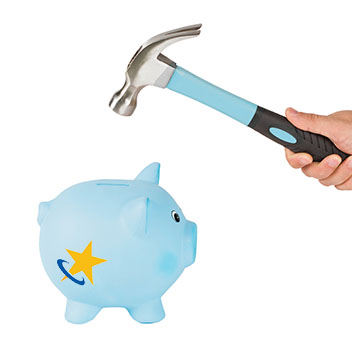The SAVE Plan forbearance is ending. After more than a year of an interest-free forbearance, borrowers enrolled in the SAVE Plan will face interest charges starting August 1, 2025. The U.S. Department of Education announced this change, giving the 7.7 million affected borrowers just days to decide their next move.
If you're on the SAVE Plan, you need to act.
What Happened to the SAVE Plan?
The SAVE Plan was hit with several legal challenges and a court injunction blocked the plan. In response, the Biden administration placed SAVE Plan borrowers into an interest-free forbearance while awaiting the court's final ruling. During this period, no interest has accrued on loan balances, ensuring they remained unchanged. However, the time spent in forbearance does not count toward progress for PSLF.
The SAVE Plan was not expected to survive in the Trump administration. And with the passing of the Big Beautiful Bill last week, we are now preparing for major changes to federal student loan repayment. The Income-Contingent Repayment (ICR) plan, which was the base plan for the SAVE Plan, is being sunset under the new law.
The Two Options for SAVE Plan Borrowers
You have two choices as a SAVE Plan borrower:
Option 1: Switch to Another Repayment Plan
You can move to a different repayment plan before (or slightly after) interest starts accruing on Aug. 1, 2025. The U.S. Department of Education's Loan Simulator can show you what plans you qualify for and what your monthly payments would be.
Option 2: Stay in Forbearance, For Now
You can remain on the SAVE Plan until you're forced out. But here's the catch—interest will start adding up on August 1, 2025. Forbearance typically doesn't stop interest from accruing, and as of August 1, all federal student loans in the SAVE Plan forbearance will accrue interest.
Key Factors to Consider
There are some things to consider while you decide your next steps.
Your Monthly Budget
Can you afford payments on a new plan? Look at your monthly income and expenses. If switching to another plan means payments you can't handle, staying in forbearance might be an option, for now. However, this option will not last forever and you do need to plan to re-enter repayment at some point. But remember—interest will keep growing.
Understand the Cost of Interest
Interest adds up over time, increasing the total cost of your loan. Unless you qualify for forgiveness or discharge, you’ll be responsible for repaying not just the original amount borrowed but also all the interest that accumulates.
Public Service Loan Forgiveness Considerations
Working toward PSLF? You have a tough choice. You can stay in forbearance (knowing interest is accruing) or switch to another qualifying plan.
If you decide to stay in the SAVE Plan forbearance, it is not recommended that you make payments until you switch to another eligible plan. Payments made while you are in the SAVE Plan forbearance will not count toward your 120 qualifying payments for PSLF forgiveness.
Submitting an Application to Switch Repayment Plans
If you're considering switching repayment plans, the U.S. Department of Education recommends that borrowers enrolled in the SAVE Plan explore the Income-Based Repayment (IBR) plan. While the Big Beautiful Bill removed the requirement for partial financial hardship to repay under IBR, the Department has yet to update their information, forms, or systems. At this time, it is not known when these Department resources will be reflective of the changes. In addition to IBR, there are other income-driven repayment options to consider, such as ICR, and Pay as You Earn (PAYE). You might find that alternative plans like Standard, Graduated, or Extended Repayment may be more budget-friendly based on your financial situation. But if you are seeking PSLF, keep in mind that you need to be repaying in an eligible repayment plan, meaning an income-driven plan, to continue making progress towards forgiveness.
Switching your repayment plan may take some time, as student loan servicers are currently working through a backlog of applications, as their processing was on hold for a period of time. You may remain in forbearance for several weeks while your application is reviewed.
The Department has announced plans to contact the 7.7 million borrowers enrolled in the SAVE Plan to outline their available options and encourage them to transition to another repayment plan.
What's Coming Next:
The Big Beautiful Bill creates a new repayment option called the Repayment Assistance Plan (RAP). This plan might appeal to many borrowers, but it won't be available until July 1, 2026.
That's more than a year away and the clock is ticking before interest starts accruing on your loans in the SAVE Plan.
Use the U.S. Department of Education's Loan Simulator to explore your options. Start the application process if you want to switch plans. Most importantly, stay informed—your financial future depends on the decision you make right now.







